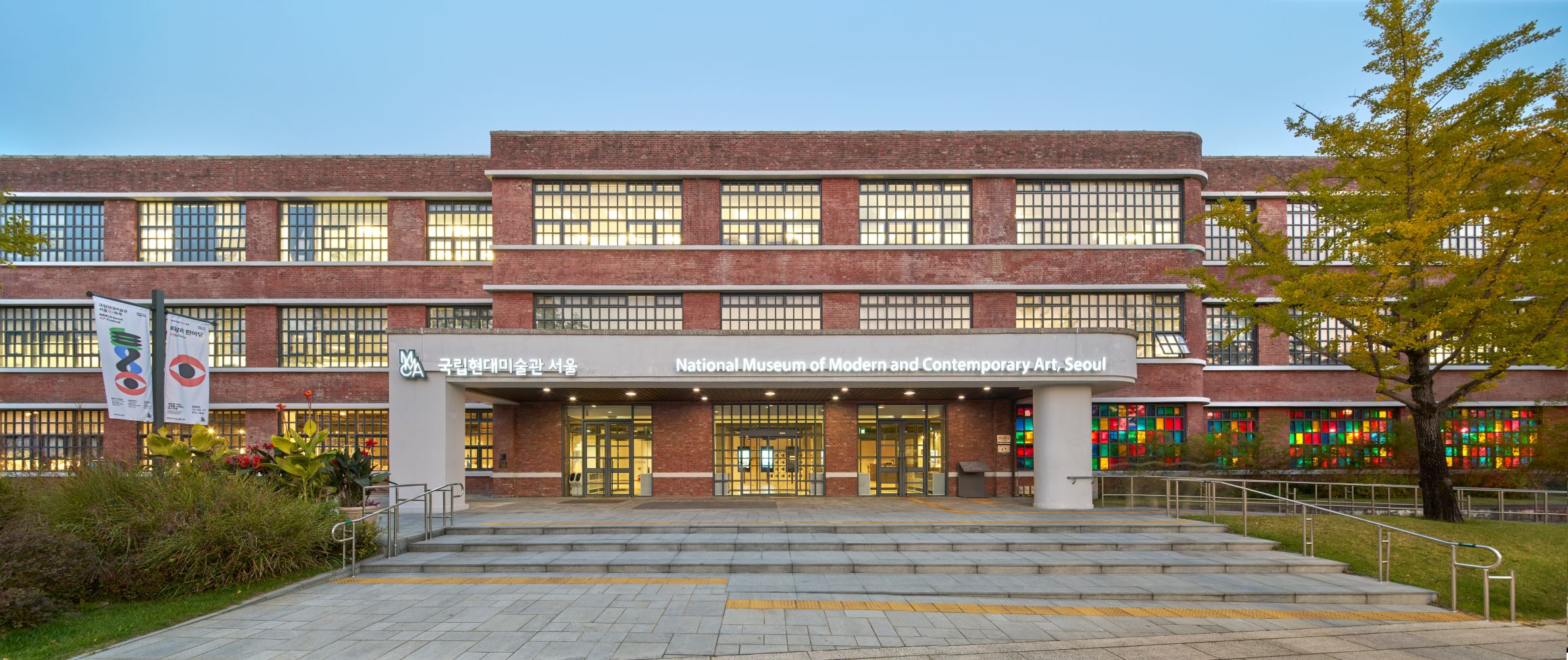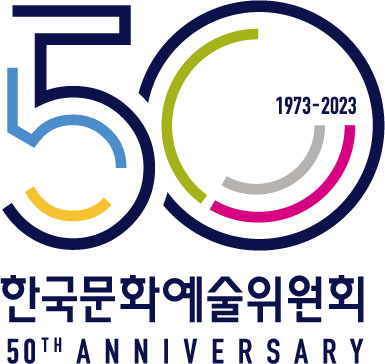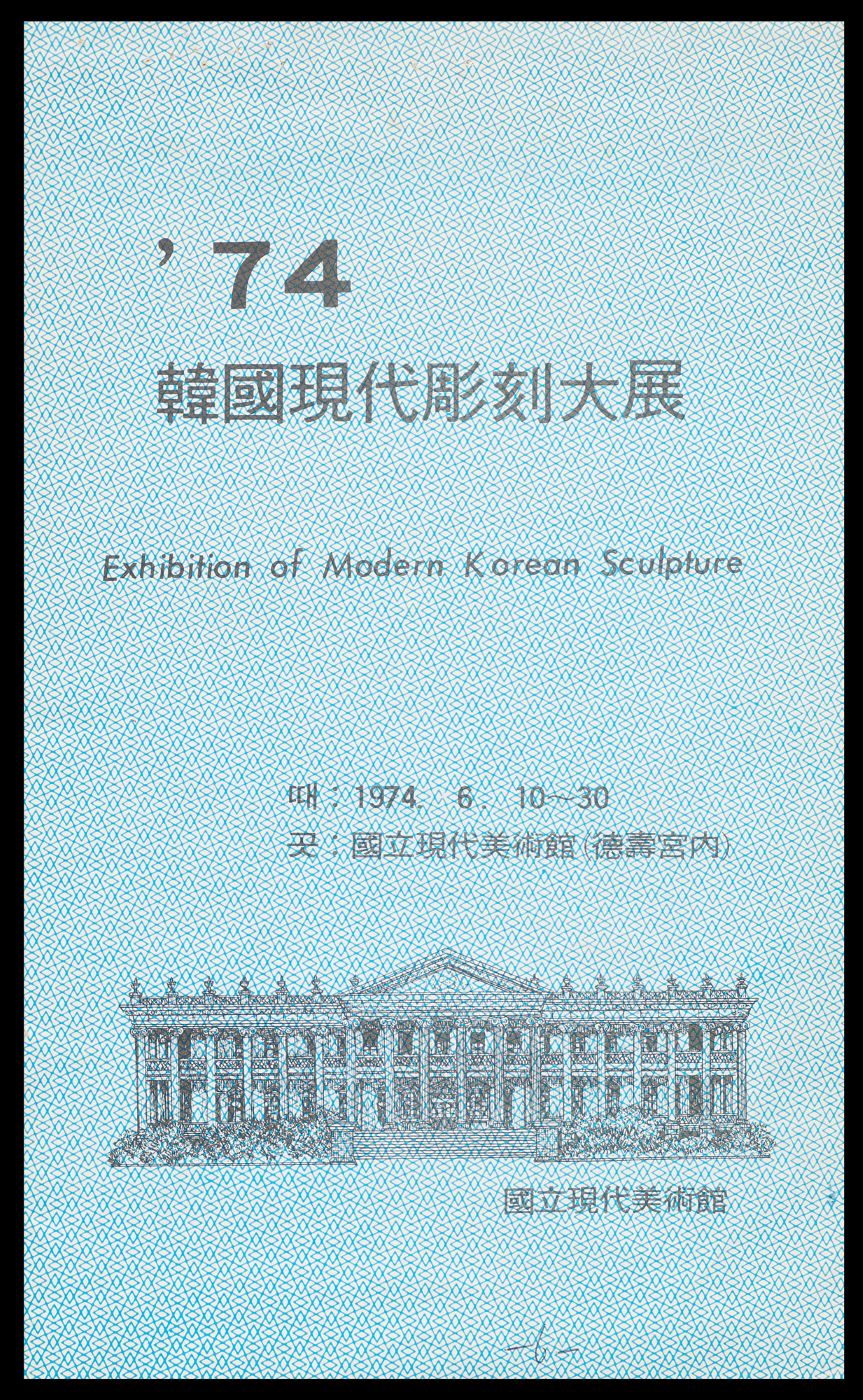
'86 Grand Craft Exhibition of Korea, Poster, 1986, MMCA Art Research Center Collection
Grand Craft Exhibition of Korea
* Source: MMCA
Related
-

National Museum of Modern and Contemporary Art, Korea (MMCA)
A national museum established in 1969 that researches, collects, and exhibits modern and contemporary art. As of 2018, there are branches in Gwacheon, Deoksugung, Seoul, and Cheongju. When first established, the National Museum of Modern Art (now MMCA) was located within Gyeongbokgung palace. In 1973, the museum moved to the East Wing of the Deoksugung Seokjojeon building. Then, in 1986, the museum moved to its current location in Gwacheon, to occupy a new building equipped with an outdoor sculpture exhibition space, and has since opened a new chapter in Korean art. The perceived need for a space to focus specifically on Korean contemporary art led to the establishment of further site, the National Museum of Contemporary Art, Deoksugung in 1998. In November 2013, a further demand for contemporary art exhibitions led to the establishment of another Seoul branch being created in the Defense Security Command building in Sogyeok-dong, Jongno-gu, which has since its inception engaged in multifaceted exhibitions of both domestic and overseas contemporary art. Also, as a further component of the MMCA complex, a disused tobacco factory in Cheongju was remodeled to provide a home to the National Art Storage Center.
-

National Art Exhibition
A government-hosted exhibition held 30 times from 1949 to 1981, also known by the shorter name Gukjeon. Following national independence, the exhibition was the primary means for young and emergent Korean artists to achieve recognition. The influence of the exhibition declined as a result of the emergence of non-figurative art during the 1970s, the increased opportunities for artists to participate in overseas exhibitions, and the rise of private exhibitions and galleries.
-

Arts Council Korea (ARKO)
Arts Council Korea (ARKO) is a cultural and artistic policy review organization established under the Prime Minister's Office based on the 1973 Culture and Arts Promotion Act. It was abolished in 2000 following revision of the law. In the beginning, the Arts Council Korea was established to contribute to the development of national culture by continuing traditional cultural arts and creating new creative expressions by supporting projects and activities for the promotion of culture and arts. The council played a role in planning basic policies and plans for the promotion of culture and arts, deliberation on matters concerning the creation and operation of the Culture and Arts Promotion Fund, and deliberation on other important matters concerning the promotion of culture and arts. The council consisted of less than 17 members, including one chairperson (the Prime Minister) and one vice-chairperson (the Minister of Culture and Public Information) (1979. 3. 28. Revised). In addition, expert members could be appointed to collect, survey, research, and attend meetings of the council on the promotion of culture and arts. Also, local culture and arts promotion committees could be established in each city and province (1983. 4. 25. New).
Find More
-

Modern Korean Art Exhibition
The Modern Korean Art Exhibition was organized by the National Museum of Modern Art, Korea (now MMCA) from 1974 through 1978 with the intention of chronicling the history of contemporary art by genre. Starting with the Exhibition of Modern Korean Sculpture (June 10–30, 1974), it was held annually for five years, the Modern Korean Crafts Grand Exhibition (July 9–27, 1975), the Modern Korean Art Exhibition: Eastern Paintings (June 16–July 15, 1976), the Modern Korean Western Painting Exhibition (March 14–April 2, 1977), and the Modern Korean Art Exhibition: Calligraphy, Architecture, and Photography (June 16–September 15, 1978). Over the course of five editions of the Modern Korean Art Exhibition, some 900 artists were introduced, and a large number of works were discovered or revisited. In conjunction with each edition, the MMCA published a series of Hanguk hyeondae misulsa (The history of Korean contemporary art), starting with sculpture written by Yoo Geunjun in 1974 and continuing with crafts by Lee Kyungsung in 1975, Eastern painting by Lee Gu-yeol in 1976, Western painting by Oh Kwang-su and Yu Jun-sang in 1977, architecture by Yun Ilju and Kang Myeong-gu in 1978, photography by Yook Myoungshim and Choe Injin in 1979, and calligraphy by Yim Changsun, Lee Gu-yeol, and Lee Heungu in 1981. This series of publications laid the foundation for art history research in each field. In particular, Lee Gu-yeol and Oh Kwang-su published additional and revised versions of their book Hanguk hyeondae misulsa to release Geundae hangukhwaui heureum (The flow of dodern Korean painting) (Lee Gu-yeol, Mijinsa, 1984) and Hanguk hyeondae misulsa: 1900nyeon ihuui hanguk misurui jeongae (Korean contemporary art history: Development of Korean Art after 1900" (Oh Kwang-su, Yeolhwadang, 1979). As basic research materials, they exerted considerable influence upon the study of art history in their respective fields. The MMCA’s holding of the Modern Korean Art Exhibition and its publication of art history books demonstrate the important role of the collaboration with national public museums in the study of Korean contemporary art history.
-

Korean Craftmen's Council
There are two organizations that were formed in the 1960s and 1970s under the same name Korean Craftsmen’s Council (KCC). The first KCC was established on July 17, 1965 by fifteen craftsmen, including the chief secretary Park Daisoon, the assistant administrator Nam Sang-gyo, and Lee Shinja, Yi U-seong, and Chung Kyu. Based on the academic research on craft activities, it strove to enlighten people about crafts, study craft education, develop industrial planning and product management of contemporary crafts, and promote international exchanges of craftworks. Its crafts exhibition was held annually, with the first one held at the Korean Information Service Gallery from July 20 through 26 in 1965. The first KCC led the “Good Design” movement. According to the newspaper article in Dong-A Ilbo on March 12, 1966, it was admitted to the World Crafts Council (WCC) as a full member in 1966, the year after its founding. The second KCC was founded on July 10, 1973 by craftsmen in their thirties, such as Kang Chankyun, Kwak Daeung, Kim Tuk-kyum, Kim Jihee, Park Hyungchul, Yim Mugeun, Cho Chunghyun, Choi Seungchun, and Choi Hyunchil. It aimed to fulfill “its responsibility as designers to rationalize and beautify modern living spaces.” From September 17 through 23 in 1974, the exhibition celebrating its founding was held at the Shinsegae Gallery. Starting in 1980, it had four divisions of metal crafts, ceramics, wood-lacquering crafts, and dyeing crafts. It began to use the new name Korean Crafts Council from the late 1980s, continuing until today. The number of its divisions has also increased to five (metal crafts, ceramics, wood-lacquering crafts, textile crafts, and glass crafts).






